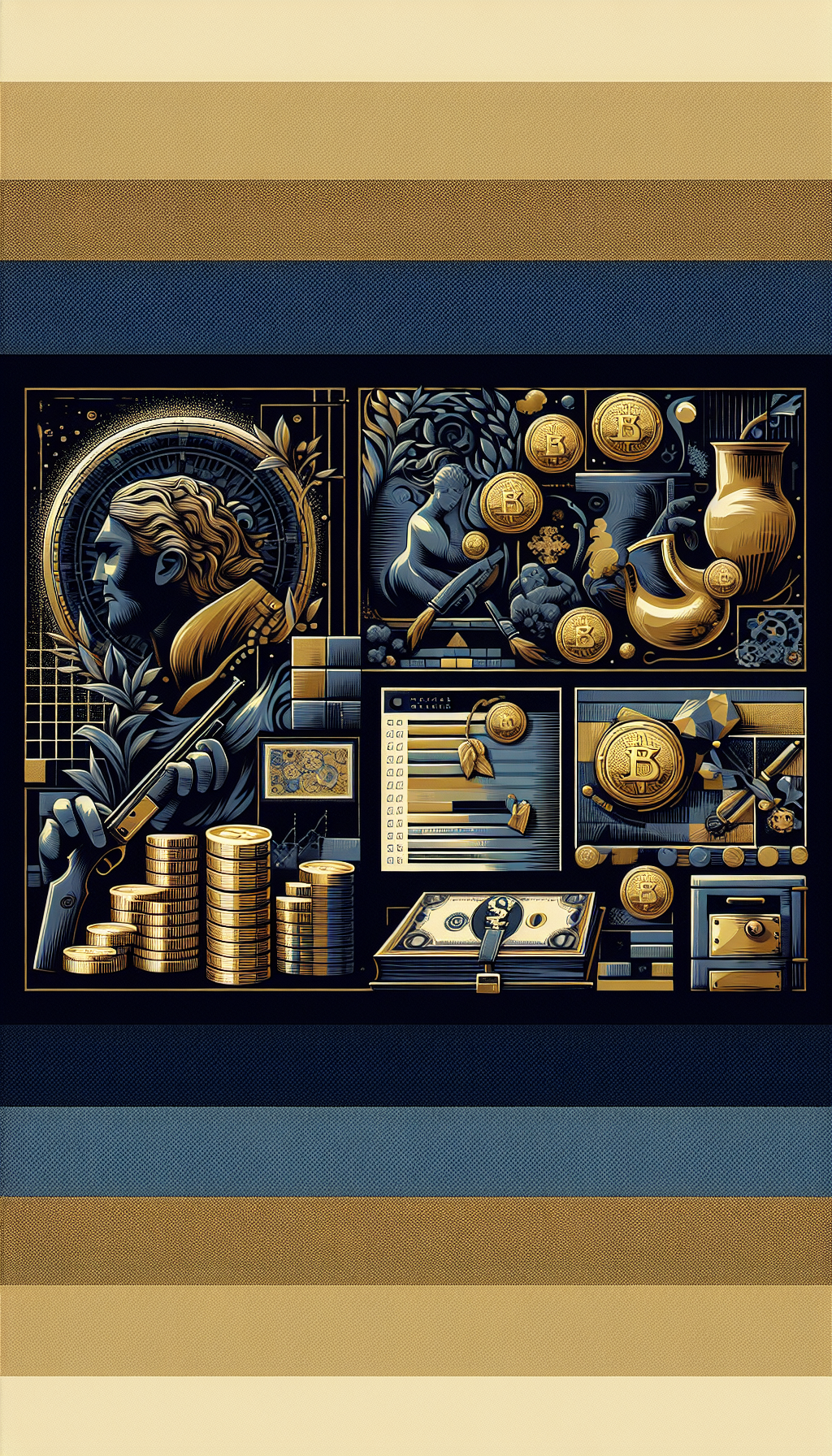Unlocking The True Worth Of Your Collection A Comprehensive Guide To Value Artwork And Investment
Valuing art and antiques is part detective work, part market analysis, and part risk management. Whether you’re insuring, selling, buying, or planning an estate, understanding how value is formed—and how it changes—helps you protect your capital and make better decisions. This guide breaks down the types of value, the research process, authentication and condition essentials, market channels, and portfolio strategy so you can move from intuition to disciplined practice.
What “Value” Really Means in Art and Antiques
“Value” isn’t singular in this market; different contexts require different definitions. Knowing which you need is the first step.
- Fair Market Value (FMV): The price a willing buyer and willing seller would agree to in an open market, with neither under compulsion. Used for estate tax, charitable donations, and some private transactions.
- Auction Value: Typically the hammer price achieved at auction. Realized prices reflect competitive bidding but exclude buyer’s premium; total cost to the buyer includes buyer’s premium and applicable taxes.
- Retail/Dealer Asking Price: The price set by a gallery or dealer. Often higher than FMV due to curation, marketing, and advisory services.
- Insurance Replacement Value (IRV): The cost to replace with a similar item at retail in a reasonable time. Usually higher than FMV because it assumes retail sourcing under time pressure.
- Liquidation Value: Expected in a forced sale or short time frame. Often well below FMV.
- Trade/Wholesale Value: Prices dealers pay each other; often below retail due to margin requirements.
Core value drivers:
- Authenticity: Whether the work is by the stated maker, workshop, or later follower.
- Provenance: Ownership history, exhibition history, and literature references that can legitimize and enhance desirability.
- Condition and Integrity: Original materials and surfaces, extent and quality of restoration, and structural stability.
- Rarity and Demand: Scarcity of comparable works and current collector appetite for the artist, period, or category.
- Quality: Within an artist’s oeuvre, subject, execution, period, and size can separate masterpieces from minor works.
- Market Context: Venue, timing, and macro factors (interest rates, global liquidity, geopolitical events) affect bidding and liquidity.
- Legal Status: Clear title, export permits, and compliance with cultural property laws impact salability and price.
Always align your valuation approach with the purpose: insurance needs IRV; estate planning relies on FMV; consignment strategy focuses on probable auction or private sale proceeds net of fees.
How to Research and Benchmark Prices Like a Professional
Price research is about finding true comparables and normalizing differences. Focus on apples-to-apples.
Key comparability filters:
- Maker/Artist Attribution: Authenticated vs attributed vs follower/school. Workshop or period copies are materially different markets.
- Medium and Support: Oil on canvas vs panel, bronze vs spelter, porcelain vs earthenware. Technique and material quality matter.
- Dimensions: Price often scales with size, but not linearly; sweet spots exist for wall display and transport.
- Date/Period: Prime periods typically command premiums.
- Subject and Iconography: Signature subjects can outperform (e.g., marine scenes, portraits of notable figures, iconic motifs).
- Edition and State: For prints/sculpture, note edition size, number, state/variant, and casting date (lifetime vs posthumous).
- Signature, Inscriptions, and Labels: Strong, period signatures, foundry marks, gallery labels, and exhibition stickers are valuable clues.
- Condition and Restoration: Note relining, inpainting, overpolishing, losses, repairs, or replaced elements.
- Sale Venue and Region: Top-tier auctions vs regional houses; country-specific demand can be significant.
- Date of Sale: Adjust expectations for market shifts; a 2012 result may not reflect a 2025 market.
Building your dataset:
- Auction results: Prior hammer and total (hammer + buyer’s premium) provide real-world benchmarks. Track multiple sales to see trajectory and volatility.
- Catalogues raisonnés and scholarly literature: Confirm authenticity and significance.
- Exhibition and publication history: Works included in major shows or publications often command premiums.
- Dealer price lists and fair reports: Useful for retail context, but treat ask prices as starting points, not realized values.
Normalizing differences:
- Apply discounts or premiums for condition issues, superior provenance, prime subjects, and edition sizes.
- Consider liquidity risk: Niche categories can have wider bid-ask spreads and longer sale cycles, warranting a valuation discount.
- Account for fees: For net proceeds, subtract seller’s commission, photography and insurance charges, and shipping; for buyer’s total cost, add buyer’s premium, tax, and shipping.
Document your assumptions: note why each comparable qualifies and how you adjusted. Clear notes make your valuation defensible to insurers, advisors, and future you.
Authentication and Provenance Essentials
Authentication raises confidence and price; uncertainty depresses both. Build a defensible paper trail.
Provenance fundamentals:
- Chain of Ownership: Collect bills of sale, invoices, dealer or auction receipts, correspondence, and shipping documents.
- Exhibition History: Exhibition catalog references and wall labels add weight.
- Literature: Mentions in catalogues raisonnés, monographs, or period reviews elevate status.
- Institutional or Notable Collections: Prior ownership by recognized collectors or museums can boost value.
Red flags and gaps:
- Abrupt provenance gaps, especially during periods of conflict, require careful due diligence and possibly legal counsel.
- Conflicting COAs: Certificates of authenticity vary in credibility; prioritize foundations, estates, and recognized scholar committees.
- Dubious labels and stamps: These can be forged; corroborate with independent sources.
Technical analysis tools:
- Pigment and Binder Analysis: Identifies anachronistic materials.
- Dendrochronology: Dates wood panels.
- Thermoluminescence: Dates ceramic firing.
- Infrared Reflectography and X-radiography: Reveal underdrawings, pentimenti, and structural issues.
- Bronze Casting Analysis: Foundry marks and metallurgical composition help date casts.
Signature and authorship nuances:
- “Attributed to,” “Circle of,” “Follower of,” “After”: Each descriptor carries a market discount relative to “by.”
- Workshop/Lifetime Cast vs Posthumous: Sculpture markets hinge on casting history and edition control.
- Editions and Stamps: Verify edition size, numbering conventions, and foundry reputations.
Keep a digital dossier: scans of all documents, conservation reports, high-resolution images of front/back, signatures, labels, and condition notes. This package accelerates consignment and reassures buyers.
Condition, Restoration, and Conservation Impact on Value
Condition is not cosmetic; it’s economics. The right treatment can preserve value; the wrong one can destroy it.
Paintings:
- Common Issues: Craquelure, cupping, flaking, tenting, discoloration, overcleaning, blooming varnish, relining, tears, and losses.
- Conservation Principles: Reversibility, minimal intervention, material compatibility, and full documentation.
- Value Effects: Sensitive cleaning and reversible inpainting can stabilize or slightly improve marketability. Overcleaning, aggressive relining, or heavy overpaint reduce value materially.
Paper and Prints:
- Concerns: Foxing, toning, staining, mat burn, cockling, trimmed margins, scuffs, and acid migration.
- Best Practices: Archival mats, UV-filter glazing, neutral pH storage, and humidity control. Washing and deacidification should be handled by a paper conservator.
Sculpture and Decorative Arts:
- Metals: Distinguish desirable patina from damaging corrosion. Avoid overpolishing bronze or silver if original surface contributes to value.
- Furniture: Replaced hardware, refinished surfaces, cut-down legs, new veneers, or structural rebuilds matter. Original surfaces and honest wear are prized.
- Ceramics and Glass: Hairline cracks, staple repairs, overpainting, and infill affect value; quality professional restorations should be disclosed.
Cost-to-value calculus:
- Conservation Budget: Don’t spend $2,000 stabilizing a $3,000 painting unless preservation, not resale, is the aim.
- Pre-treatment Quotes: Get written estimates and treatment proposals; photograph before/after.
- Condition Report: Obtain a formal report when consigning—auction buyers pay premiums for transparent, professional assessments.
Environmental management:
- Target 45–55% relative humidity and stable temperatures.
- Avoid direct sunlight and strong UV.
- Use appropriate hanging hardware and earthquake-safe mounts where relevant.
Strategic Buying and Selling: Channels, Fees, and Timing
Choosing the right venue can add or subtract double-digit percentages from your net.
Selling channels:
- Auction Houses: Visibility and competitive bidding. Costs include seller’s commission, photography, insurance, and shipping. Set a realistic reserve; consider third-party guarantees for trophy works.
- Dealers/Galleries: Discretion and curated buyers. Expect consignment agreements with commission; negotiate exclusivity period and minimum net.
- Private Sale Brokers: Useful for high-value works needing confidentiality; fees are negotiable but verify disclosure and conflicts.
- Online Platforms: Lower barrier to entry and broad reach; ensure robust buyer vetting, condition transparency, and shipping protocols.
Buying channels:
- Primary Market (from galleries): Access to new works and potential relationships with artists. Waiting lists for in-demand names.
- Secondary Market (auction/private): Price discovery via comps; factor in buyer’s premium and due diligence costs.
Fee literacy:
- Buyer’s Premium: Tiered percentage added to hammer price; materially affects total cost.
- Seller’s Commission: Negotiable for high-value consignments; secure sliding scales and reduced fees for multiple works.
- Additional Costs: VAT/sales tax, artist’s resale right where applicable, storage, shipping, insurance, framing, and conservation.
Timing:
- Seasonality: Major sales weeks and fairs drive attention; niche categories may perform better in specialized sales calendars.
- Market Cycles: Track supply surges after record prices; sometimes the best sale is the next sale, sometimes it’s prudent to wait.
- Narrative and Presentation: High-quality photography, thorough provenance, and compelling cataloguing can shift outcomes significantly.
Legal and logistics:
- Export/Import: Cultural property laws, endangered materials (e.g., ivory restrictions), and export licenses can delay or block sales. Build lead time.
- Title and Risk: Ensure clear title; insure works during transit and on consignment. Understand when risk transfers in contracts.
Building a Collection With Investment Discipline
Collecting for love and investing for return aren’t mutually exclusive. A disciplined framework helps you do both.
Define your thesis:
- Focus by artist, period, medium, or theme where you can develop expertise.
- Identify edge: Access to undervalued segments, informational advantages, or local knowledge.
Portfolio design:
- Core and Satellite: Core holdings in established, liquid names; satellites in emerging or niche areas with higher risk/reward.
- Diversification: Spread across categories to mitigate idiosyncratic risk (e.g., mix of paintings, works on paper, sculpture, and decorative arts).
- Liquidity Tiers: Balance trophy, mid-market, and readily tradable pieces; know expected time-to-sale for each.
Underwriting each acquisition:
- Target Margin of Safety: Buy below conservative FMV, allowing for fees and potential conservation.
- Checklist Before Purchase: Authorship confidence, condition review, comparable sales, fee-inclusive total cost, and exit channel.
- Holding Period: Art markets favor patient capital; set 5–10 year horizons for most works unless trading opportunities arise.
Risk controls:
- Avoid chasing peaks catalyzed by headline records.
- Beware of over-restored pieces and compromised provenance.
- Document all agreements in writing; avoid handshake deals for meaningful sums.
Operations and stewardship:
- Inventory System: Maintain a catalog with images, descriptions, provenance, condition, and documents.
- Insurance: Schedule high-value items; update coverage after major market moves or new appraisals.
- Estate and Tax Planning: Align appraisals with filing requirements; consider charitable gifting strategies; plan for heirs’ disposition with instructions and contacts.
Practical Checklist: Valuing Your Artwork Step-by-Step
- Define purpose of valuation (FMV, IRV, resale, donation, estate).
- Capture high-resolution images of front, back, signatures, labels, and condition issues.
- Record exact details: maker, title, date, medium, dimensions, edition, marks, inscriptions.
- Assemble provenance: invoices, receipts, exhibition and literature references.
- Screen for red flags: gaps in ownership, export restrictions, restitution risks.
- Obtain or consult expert opinion (foundation, estate, recognized scholars) where needed.
- Commission a condition report from a qualified conservator for mid/high-value items.
- Build comparables: find at least 5–10 true comps; note venue, date, condition, subject, and price.
- Normalize comps: adjust for condition, size, edition, venue, and time.
- Select valuation type and range; document assumptions and methodology.
- If selling, choose channel; model net proceeds after all fees and logistics.
- If insuring, update policy with IRV and include documentation package.
- Set review cadence; calendar reappraisal every 3–5 years or after major market events.
FAQ
Q: When do I need a formal appraisal versus doing my own research? A: Use a formal appraisal for insurance scheduling, estate or gift tax filings, charitable donations, and legal disputes. For lower-value pieces or personal tracking, a research-based estimate using auction comparables may suffice. If value could be material to tax or legal matters, commission a qualified appraiser.
Q: Why doesn’t an auction estimate equal fair market value? A: Auction estimates are marketing tools and reflect a likely sale range at that venue and time. FMV is a broader concept based on what a willing buyer and seller would agree to in an open market. FMV may be lower or higher than a specific auction estimate depending on fees, venue, timing, and liquidity.
Q: Does restoration increase value? A: Stabilizing, reversible conservation can protect value and improve salability. However, heavy restoration, overcleaning, or non-reversible interventions usually reduce value. The key metric is cost-to-value: only invest in treatment when it preserves authenticity and makes economic sense for your objective.
Q: How do I value unsigned or “attributed to” works? A: Focus on provenance, stylistic and technical analysis, and expert opinions. Value them using comps with similar attribution language. Expect significant discounts versus fully authenticated works. Upgrading attribution (with evidence) can materially increase value.
Q: How often should I update appraisals? A: For insurance, every 3–5 years or after major market shifts, acquisitions, or conservation. For volatile segments or rapidly appreciating artists, review annually. After record prices in a category, reassess sooner to ensure coverage aligns with replacement cost.
Closing Thoughts
Great collections marry connoisseurship with process. Define the value you need, build evidence through provenance and condition reports, anchor pricing with true comparables, and choose the right venue at the right time. If you treat each piece like an underwriting decision—documented, defensible, and aligned with your objectives—you’ll preserve cultural significance and financial value in equal measure.




